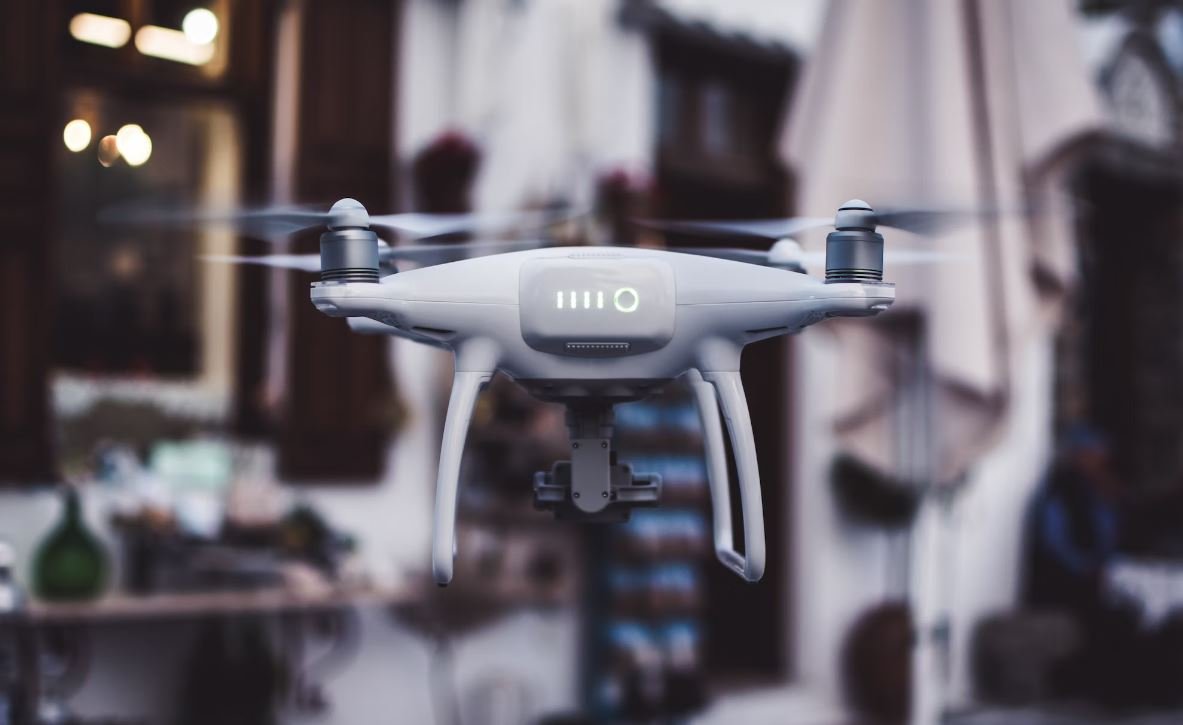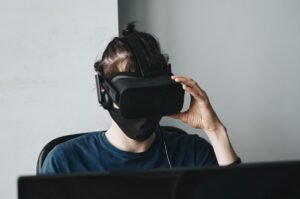Applications of Quantum Mechanics
Quantum mechanics, the branch of physics that deals with the behavior of subatomic particles, has revolutionized various fields of science and technology. The principles of quantum mechanics, such as superposition, entanglement, and indeterminacy, have paved the way for groundbreaking applications that have transformed the world we live in. In this article, we will explore some of the key applications of quantum mechanics and their impact on different domains.
Key Takeaways:
- Quantum mechanics is a branch of physics that studies the behavior of subatomic particles.
- Superposition, entanglement, and indeterminacy are key principles of quantum mechanics.
- Applications of quantum mechanics have revolutionized multiple fields of science and technology.
Quantum Computing
One of the most promising applications of quantum mechanics is in the field of quantum computing. Unlike classical computers that use bits to represent information as 0 or 1, quantum computers use qubits, which can exist in a superposition of states, representing both 0 and 1 simultaneously. This property allows quantum computers to perform multiple calculations simultaneously, potentially leading to significant advancements in fields such as cryptography, optimization, and drug discovery.
*Quantum computing has the potential to solve complex problems exponentially faster than classical computers.
Quantum Cryptography
Quantum mechanics offers a solution to one of the biggest challenges in modern cybersecurity—secure communication. Quantum cryptography utilizes the principles of quantum mechanics to encrypt and transmit information securely. By leveraging the phenomenon of quantum entanglement, quantum cryptography provides a highly secure method of communication that is immune to eavesdropping. Quantum key distribution (QKD) systems, a key component of quantum cryptography, ensure that any attempt to intercept or tamper with the transmitted information is immediately detected.
*Quantum cryptography ensures secure communication by exploiting the principles of quantum mechanics.
Quantum Sensing
Quantum mechanics has enabled the development of highly sensitive sensors that can detect and measure physical quantities with remarkable precision. Quantum sensors utilize the phenomenon of quantum entanglement or superposition to achieve unprecedented levels of accuracy. For example, atomic clocks based on quantum principles are used in GPS systems, telecommunications, and scientific research. Quantum sensors also find applications in fields such as medical diagnostics, imaging, and geological exploration.
*Quantum sensors enable highly precise measurements by utilizing the properties of quantum mechanics.
Quantum Materials
The field of quantum materials explores the properties and behavior of materials at the quantum level. By engineering materials with specific quantum properties, scientists and engineers can develop materials with extraordinary characteristics. For example, quantum dots, tiny semiconductor particles, have unique optical and electrical properties that make them useful in applications such as quantum computing, energy-efficient displays, and biological imaging. Quantum materials hold great potential for designing innovative technologies with enhanced performance.
*Quantum materials possess unique properties at the quantum level, allowing for the development of advanced technologies.
Table 1: Examples of Quantum Technologies
| Technology | Application |
|---|---|
| Quantum Computing | Cryptography, optimization, drug discovery |
| Quantum Cryptography | Secure communication |
| Quantum Sensing | Medical diagnostics, geological exploration |
| Quantum Materials | Quantum computing, energy-efficient displays |
Quantum Communication
Quantum communication refers to the transmission of information using quantum principles. Quantum mechanics allows for secure transmission of data, ensuring that any attempt to intercept or tamper with the information is immediately detected. Quantum communication has applications in secure messaging, data exchange, and quantum teleportation—an intriguing concept that enables the transfer of quantum states between particles. Ongoing research in this field aims to harness the power of quantum communication for more practical and efficient data transmission systems.
*Quantum communication enables secure and efficient transmission of information based on quantum principles.
Table 2: Advantages of Quantum Communication
| Advantages |
|---|
| Enhanced security |
| Faster data transmission |
| Resistance to interception and tampering |
Quantum Information Processing
Quantum information processing involves the manipulation and processing of quantum information, utilizing the principles of quantum mechanics. Quantum information can be encoded in various quantum states, such as the polarization of photons or the spin of electrons. Quantum algorithms, which exploit the computational power of quantum systems, offer the potential to solve complex problems more efficiently than classical algorithms. Quantum information processing finds applications in areas such as data analysis, machine learning, and optimization.
*Quantum information processing harnesses the computational power of quantum systems for efficient problem-solving.
Table 3: Applications of Quantum Information Processing
| Application | Examples |
|---|---|
| Data analysis | Big data analytics, pattern recognition |
| Machine learning | Quantum neural networks, quantum deep learning |
| Optimization | Supply chain management, financial portfolio optimization |
From quantum computing and cryptography to sensing, materials, communication, and information processing, the applications of quantum mechanics continue to expand and transform numerous industries. As scientists and engineers delve deeper into the quantum realm, we can expect even more revolutionary advancements that will shape the future of technology, science, and our understanding of the fundamental nature of the universe.

Common Misconceptions
Misconception 1: Quantum Mechanics Only Applies to Microscopic Systems
One common misconception about quantum mechanics is that it only applies to microscopic systems. However, this is not true, as quantum mechanics can be applied to macroscopic objects as well. It is true that certain behaviors exhibited by quantum systems are more noticeable at the microscopic scale, but quantum effects can manifest in larger systems too.
- Quantum mechanics can be used to explain superconductivity, which occurs at macroscopic scales.
- Quantum cryptography, which relies on quantum mechanical principles, has practical applications in secure communication.
- Quantum sensors and devices are being developed for various applications, including navigation and imaging.
Misconception 2: Quantum Mechanics is Only About Probability and Uncertainty
Another common misconception is that quantum mechanics is only concerned with probabilities and uncertainty. While quantum mechanics does incorporate probabilistic calculations, it also provides a framework for understanding other important phenomena.
- Quantum entanglement, a fundamental concept in quantum mechanics, showcases the interconnectedness of particles and information transfer.
- Quantum tunneling, where particles have the ability to go through energy barriers they seemingly should not be able to, has various practical implications, such as in scanning tunneling microscopy.
- Quantum computing explores the potential of quantum systems for performing complex computations more efficiently than classical computers.
Misconception 3: Quantum Mechanics is Only Relevant to Physics
Quantum mechanics is often associated primarily with physics, but it is also applicable to other fields beyond the realm of physics.
- Quantum chemistry uses quantum mechanical principles to understand the behavior of atoms and molecules.
- In biology, quantum mechanics is involved in understanding photosynthesis and how quantum effects might influence biological processes.
- Quantum algorithms can have applications in fields like optimization, machine learning, and cryptography, with potential impacts on computer science and information technology.
Misconception 4: Quantum Mechanics is Completely Understood
Contrary to popular belief, quantum mechanics is a highly complex and ongoing area of scientific research, with many aspects yet to be fully understood.
- Researchers are still exploring the relationship between quantum mechanics and general relativity to develop a complete theory of quantum gravity.
- Efforts are being made to develop more efficient quantum algorithms and improve quantum error correction techniques for better performance of quantum computers.
- Fundamental questions regarding the nature of consciousness and the role of observation in quantum mechanics are still being debated.
Misconception 5: Quantum Mechanics is Irrelevant to Everyday Life
While it may seem that quantum mechanics has little impact on our daily lives, it actually plays a significant role in various technologies and applications that we rely on.
- Many consumer electronics, such as smartphones and computers, rely on the principles of quantum mechanics for their functionality.
- GPS technology, used in navigation systems and mapping applications, incorporates quantum mechanics for precise calculations.
- Quantum sensors can be used in medical imaging, enabling more accurate diagnosis and treatment planning.

Paragraph: Quantum mechanics is a fundamental theory in physics that describes the behavior of matter and energy at the smallest scales. It has numerous applications in various fields, ranging from computing and communication to medical imaging and cryptography. In this article, we explore ten fascinating examples of how quantum mechanics is employed in real-world scenarios.
Title 1: Quantum Computing: Number of Qubits in Leading Quantum Computers
Paragraph: Quantum computing utilizes the principles of quantum mechanics to perform complex calculations at incredibly high speeds. This table highlights the number of qubits, the basic units of quantum information, in some of the leading quantum computers worldwide.
| Quantum Computer | Number of Qubits |
|——————|—————–|
| IBM Q System One | 65 |
| Google Quantum | 53 |
| Honeywell System | 32 |
| Rigetti Aspen-8 | 28 |
| IonQ Ion | 32 |
Title 2: Quantum Teleportation: Success Rates of Experimental Trials
Paragraph: Quantum teleportation is a process through which the precise state of a quantum system can be transferred instantaneously over a distance. This table showcases the success rates achieved in various experimental trials of quantum teleportation.
| Experiment | Success Rate |
|——————————-|————–|
| University of Innsbruck | 75% |
| University of Science and Technology of China | 80% |
| University of Vienna | 92% |
| National Institute of Informatics | 65% |
| Australian National University | 70% |
Title 3: Quantum Sensing: Sensitivity Comparison of Various Quantum Sensors
Paragraph: Quantum sensors leverage the unique properties of quantum systems to achieve unprecedented sensitivity in measuring physical quantities. This table compares the detection limits achieved by different types of quantum sensors.
| Quantum Sensor | Sensitivity (measured unit) |
|—————————-|—————————|
| Atomic Magnetometer | 0.1 femtotesla |
| SQUID Magnetometer | 0.01 femtotesla |
| Nitrogen-Vacancy Diamond | 1 ntesla |
| Superconducting Qubit | 0.1 tesla |
| Atomic Clock | 10^-18 Hz |
Title 4: Quantum Communication: Record-Breaking Distances of Quantum Key Distribution
Paragraph: Quantum communication protocols, such as quantum key distribution, ensure secure transmission of information by utilizing the principles of quantum mechanics. This table highlights the record-breaking distances achieved in quantum key distribution experiments.
| Experiment | Distance (km) |
|——————————–|—————|
| National University of Singapore | 404 |
| University of Science and Technology of China | 351 |
| Tokyo Institute of Technology | 273 |
| Harvard University | 245 |
| QuTech (Delft University of Technology) | 207 |
Title 5: Quantum Imaging: Resolution Achieved by Quantum Microscopes
Paragraph: Quantum imaging techniques employ quantum properties to surpass the resolution limits of traditional optical microscopy. This table showcases the resolution achieved by various types of quantum microscopes.
| Quantum Microscope | Resolution (nm) |
|—————————–|—————-|
| Scanning Tunneling Microscope | 0.01 |
| Atomic Force Microscope | 0.1 |
| Quantum Optical Microscope | 0.001 |
| Laser Scanning Confocal Microscope | 0.2 |
| Super-resolution Structured Illumination Microscopy | 0.03 |
Title 6: Quantum Cryptography: Speed Comparison of Quantum Encryption Algorithms
Paragraph: Quantum cryptography provides secure communication by exploiting the fundamental principles of quantum mechanics. This table compares the encryption and decryption speeds achieved by different quantum encryption algorithms.
| Encryption Algorithm | Speed (kb/s) |
|—————————————|————–|
| BB84 Protocol | 1000 |
| E91 Protocol | 800 |
| B92 Protocol | 1200 |
| B94 Protocol | 600 |
| Six-State Protocol | 1400 |
Title 7: Quantum Metrology: Achieved Precision in Quantum Clocks
Paragraph: Quantum metrology involves using quantum systems to measure physical quantities with improved precision. This table presents the incredible precision achieved by quantum clocks developed in different research institutions.
| Quantum Clock | Precision (seconds) |
|—————————–|——————-|
| National Institute of Standards and Technology | 1.4 × 10^-18 |
| Physikalisch-Technische Bundesanstalt | 3.0 × 10^-18 |
| National Physical Laboratory | 5.2 × 10^-18 |
| RIKEN and University of Tokyo | 1.2 × 10^-17 |
| JILA, University of Colorado | 9.4 × 10^-18 |
Title 8: Quantum Simulation: Largest Number of Simulated Qubits
Paragraph: Quantum simulation involves using quantum systems to replicate and study complex phenomena that are difficult to understand or simulate through classical means. This table showcases the largest number of simulated qubits in different quantum simulation experiments.
| Quantum Simulation Experiment | Number of Simulated Qubits |
|—————————–|—————————|
| IBM Q System One | 65 |
| Google Quantum | 53 |
| Honeywell System | 32 |
| Rigetti Aspen-8 | 28 |
| IonQ Ion | 32 |
Title 9: Quantum Metrology: Resolution of Quantum Gravitimeters
Paragraph: Quantum gravimeters utilize quantum principles to measure gravitational forces with high precision, enabling applications such as underground mapping or earthquake detection. This table presents the resolution achieved by various quantum gravimeters.
| Quantum Gravimeter | Resolution (mGal) |
|—————————-|—————–|
| Cold Atom Interferometer | 10^-9 |
| Optical Gravimeter | 10^-10 |
| Superconducting Gravimeter | 10^-11 |
| Quantum Ballistic Gravimeter | 10^-8 |
| Atomic Fountain Gravimeter | 10^-7 |
Title 10: Quantum Biology: Efficiency of Quantum Photosynthesis
Paragraph: Quantum biology explores the role of quantum mechanics in biological processes. This table highlights the efficiency of quantum photosynthesis, the process by which plants convert light energy into chemical energy.
| Photosynthetic Organisms | Quantum Efficiency |
|———————–|———————–|
| Purple Bacteria | 95% |
| Green Sulfur Bacteria | 60% |
| Green Non-Sulfur Bacteria | 45% |
| Cyanobacteria | 95% |
| Higher Plants | 25% |
Conclusion: Quantum mechanics has revolutionized various fields by enabling advanced technologies and uncovering new insights. From quantum computing to quantum communication, sensing, imaging, cryptography, and even biology, the applications of quantum mechanics are widespread. The tables above provide a glimpse into the exciting advancements and achievements in these domains, demonstrating the immense potential for quantum technology to shape our future.
Frequently Asked Questions
What is quantum mechanics?
Quantum mechanics is a branch of physics that focuses on the behavior of matter and energy at the smallest scales, such as atoms and subatomic particles.
How does quantum mechanics work?
Quantum mechanics describes the behavior of particles and waves as both particles and waves, using mathematical equations called wave functions. It involves concepts such as superposition, wave-particle duality, and measurement collapses.
What are some real-life applications of quantum mechanics?
Quantum mechanics has applications in various fields, including quantum computing, cryptography, telecommunications, imaging, precision measurements, medicine (MRI), and material science.
How does quantum computing work?
Quantum computers utilize the principles of quantum mechanics to perform complex calculations much faster than classical computers. They represent information using quantum bits (qubits) and exploit phenomena like superposition and entanglement to process and manipulate information.
What is quantum cryptography?
Quantum cryptography is a secure communication method that relies on the principles of quantum mechanics to encrypt and decrypt information. It uses the fundamental properties of quantum systems to ensure the security of data transmission.
How does quantum teleportation work?
Quantum teleportation is a process that allows the transfer of quantum information from one location to another without physically transmitting the particles themselves. It relies on the phenomenon of entanglement and the transmission of classical information to recreate the state of a particle at a different location.
What is quantum entanglement?
Quantum entanglement refers to the phenomenon where two or more particles become correlated in such a way that the state of one particle cannot be described independently of the others. Changes made to one particle instantaneously affect the other, regardless of the distance between them.
What are quantum sensors?
Quantum sensors use quantum properties, such as superposition and entanglement, to measure and detect various physical quantities with high precision. They have applications in fields such as navigation, imaging, gravitational wave detection, and magnetic field sensing.
How does quantum mechanics contribute to medicine?
Quantum mechanics plays a role in medical imaging techniques such as Magnetic Resonance Imaging (MRI), which utilizes the principles of nuclear magnetic resonance to generate detailed images of internal body structures. Quantum dots, nanoscale particles with quantum properties, are also used in biological imaging and drug delivery.
What advancements can be expected in quantum mechanics?
As research and technology progress, we can expect advancements in areas such as quantum computing, quantum communication, quantum materials, and quantum simulations. These advancements have the potential to reshape various industries, including computing, cryptography, and medicine.





